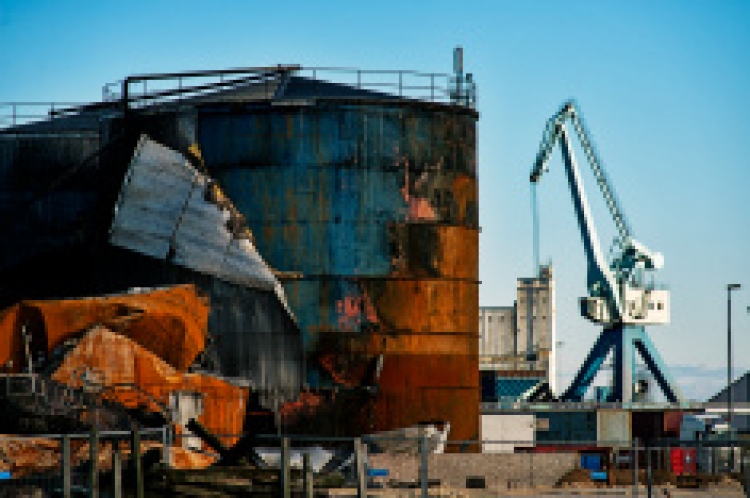Food production – deservedly or not, the industry has a bad reputation when it comes to factory fires.

Fairly or otherwise, the food industry has a poor reputation for fire losses sustained in factories. RSA have investigated the frequency and causes of these incidents to support better risk management. In this article, Adrian Butler of RSA discusses its findings.
The risks associated with the food sector have proved to be a challenge to risk managers, insurers and fire safety professionals for a number of years. There is a particular combination of dangerous processes, common hazards and combustible construction which have resulted in an increasing number of severe property damage and business interruption losses. The industry is often characterised by narrow profit margins, dominant customers, increasing globalisation and external compliance pressures such as hygiene and food safety. These factors combine to give the food industry a perception that it is not well risk managed.
Despite research and guidance documents published in the last decade relating to prevention and minimisation of fires, the food industry continues to suffer from a number of fires that have caused losses, interruption and in some cases total destruction of facilities. Therefore it is important to revisit the causes of loss and develop strategies that can be undertaken to prevent or alleviate.
Risk Engineering Research
We have undertaken research with our claims teams and actuaries to understand the causation factors of the frequency events that lead to losses. In line with industry expectations, these broadly fall under the causation headings of:
- Electrical;
- Arson;
- Hot Work;
- Contractors.
Using Risk Engineering as a key tool to prevent and minimise the severity of losses occurring, we have collected data at each site we have visited to help us understand common deficiencies and importantly what we can do to help customers reduce the frequency and severity of losses.
Risk Factor Analysis
Analysis of the top 20 risk factors (below) shows that electrical maintenance is the factor that is most commonly in need of attention, which correlates with the top causes of loss analysis. Further review shows that recommending thermographic imaging of key electrical systems is most common, followed closely by electrical maintenance programmes that include tightness testing or transformer maintenance.
Management of permit to work systems, particularly Hot Work and External Exposure Controls both also factor in the top 20, again in line with our findings.
Maintenance of installed fire protection systems is critical to ensure that they function effectively. Management of impairments ensures that where systems have been taken out of service for maintenance or any other reason, that they are managed back into full service as quickly as possible.
.jpg)
Construction Analysis confirms change in industry historic profile
The issues surrounding combustible construction in the food industry were identified in the 1990’s when there were a number of high-profile losses in the industry and tragic deaths, notably the Sun Valley fire in 1993. A trend around type of construction and ease of fire spread was noticed in factories that used “sandwich panels”. RSA’s analysis shows that 53% of the buildings visited are assessed as having non-combustible construction, suggesting that steps have been taken to start to address this legacy issue.
.jpg)
It is important to remember in an industry that is often a high volume and low margin, combustible construction still remains in many facilities today, which explains the propensity of recommendations to address this factor. Our view is that recommendations are made most commonly under this factor to help manage construction around special hazards in the food industry, such as smokers, fryers and cooking systems, coupled with recommendations for localised fire protection systems. This explains the appearance of recommendations under the factor of “Location and Construction” and “Fire Suppression Systems” and helps us begin to understand the approach being taken in the industry to special hazard protection and construction management.
Focus on Risk Management
Research amongst our customers’ shows that change is afoot, particularly around construction profiles and in understanding risks and mitigating them. Managing their business risks is something that all businesses do and managing risks that can lead to physical loss as a result of fire is part of that process. As part of a property risk prevention visit programme, working with your Insurer’s Risk Engineering Consultant you will be able to identify common food industry hazards and plan to mitigate their effect. This may be over and above any statutory duties, but this risk management will begin to help reduce the frequency and severity of any losses that may incur.
Adrian Butler is Head of Technical Risk, Global Consulting at RSA.
.png)
Adrian Butler - RSA
